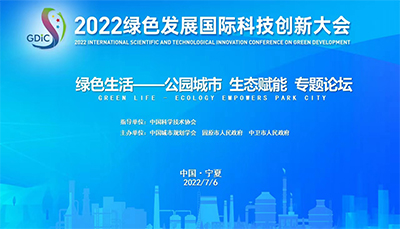


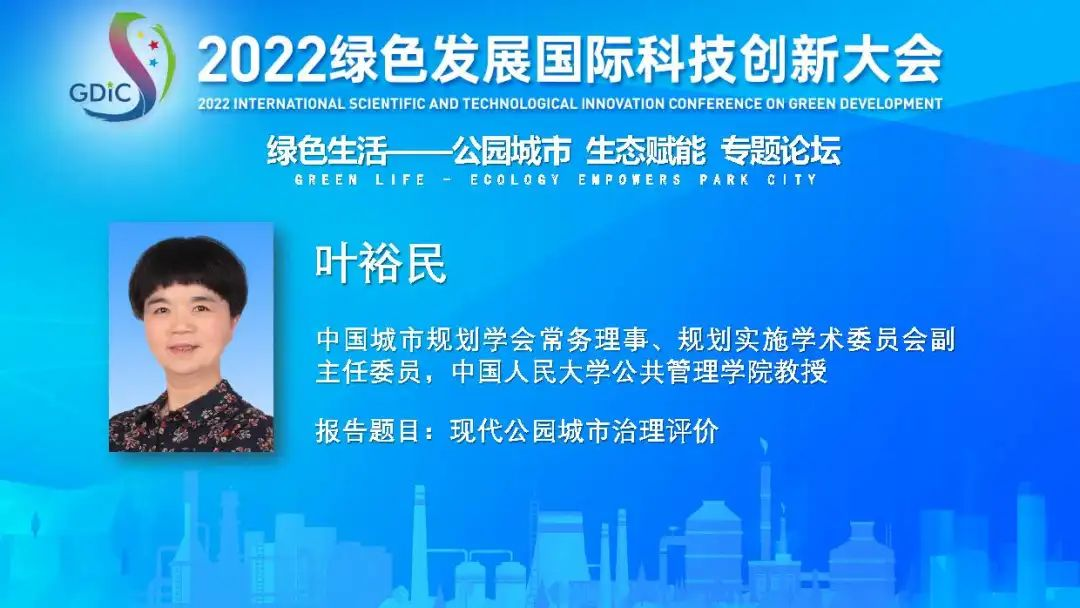
Professor Ye Yumin analyzed the differences between urban management and urban governance. She proposed to build a people-centered “4W” general analysis framework for urban governance. Under the established people-centered goal, the selection of indicators mainly is depended on "who will govern and how to govern". Professor Ye pointed out that the overall value goal of park city governance is to realize the health, beauty, enjoyment and safety of all people in the park city through modern governance.
Professor Ye explained the contents, data sources, and calculation methods of the three indicators in the field of "modern governance" of park city. The three indicators are: "multiple co-governance, law-based governance, and smart governance". She used the calculation results of 10 sample cities to show the differences between cities. Professor Ye pointed out that various cities are doing well in smart governance at present, while multi-governance and legal governance were relatively weak, and it is necessary to improve smart governance based on public interests.
Finally, Ye advocated to promote the modernization of the "people-centered" park city governance system and governance capacity in practice, so as to realize the health, beauty, enjoyment and safety of park cities. It is hoped that park city governance will provide an effective starting point for park city construction and high-quality development.
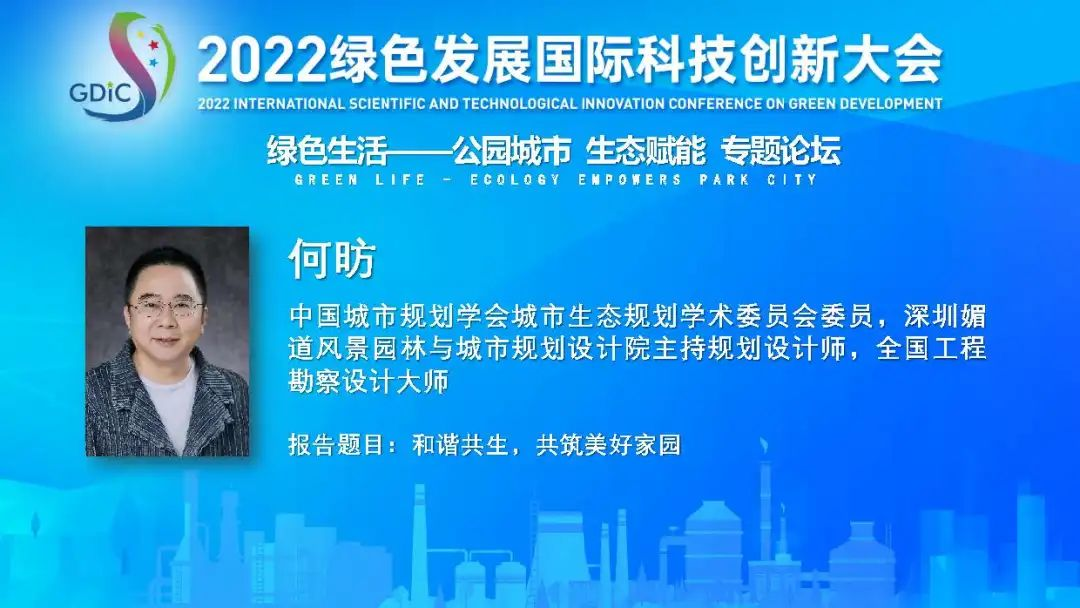
Professor He Fang pointed out that the park city is the urban expression of Xi Jinping's ecological civilization thought, the advanced form of the future city, and the urban plate practice of beautiful China. He focused on three major indicators in the field of "harmonious symbiosis" in the Park City Index: safety and sustainability, natural symbiosis, and environmental health.
He concluded that (1) “safety and sustainability” are the prerequisites for the field of harmonious symbiosis, and to build the basic conditions to support the development of park cities; (2) “natural symbiosis” pays attention to the biological perspective, and is committed to realizing that the city is also a beautiful home for local animals and plants; (3) “environmental health” starting from the perspective of human beings is the important guarantee of maintaining a good ecological environment in society. The three fields complement each other to build a beautiful home where people and nature coexist in harmony.
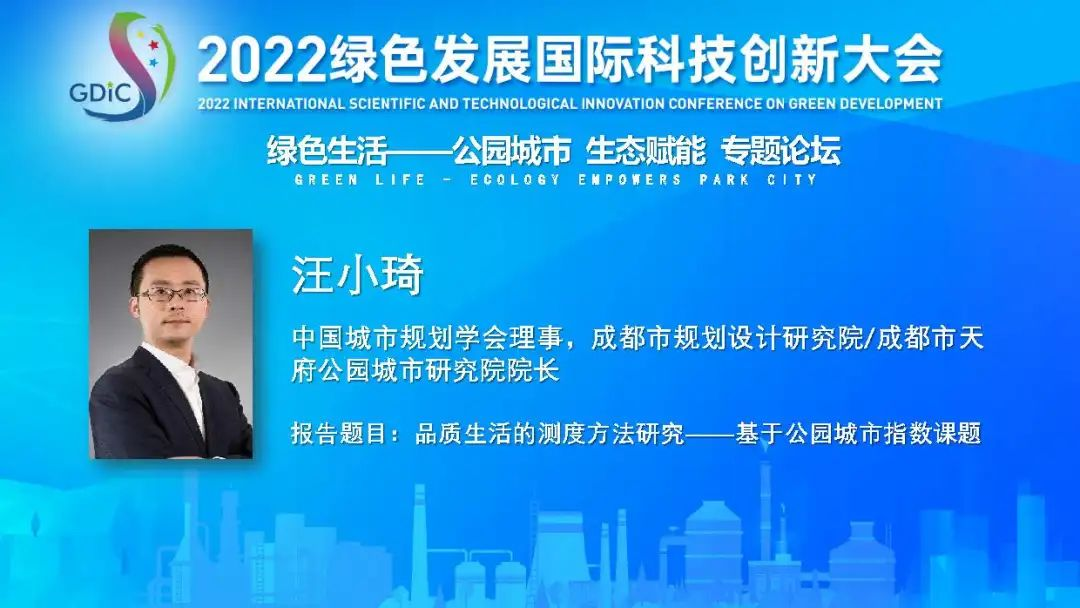
Mr Wang Xiaoqi pointed out that quality of life has become a new concept and new pursuit from the perspective of the development trend of the times, national orientation and people's needs. Correspondingly, how to establish a scientific and effective measurement method for the quality of urban life and form a value orientation for creating a high-quality life is also an important part of the research on the Park City Index.
He also elaborated on the three sets of indexes in the field of "quality of life", namely "integration of city and garden, rural life, and vitality of popularity". The core is to adhere to the people-centered approach, allowing citizens to enjoy life in the ecology, enjoy services in the park, and improve the happiness and satisfaction of the citizens.
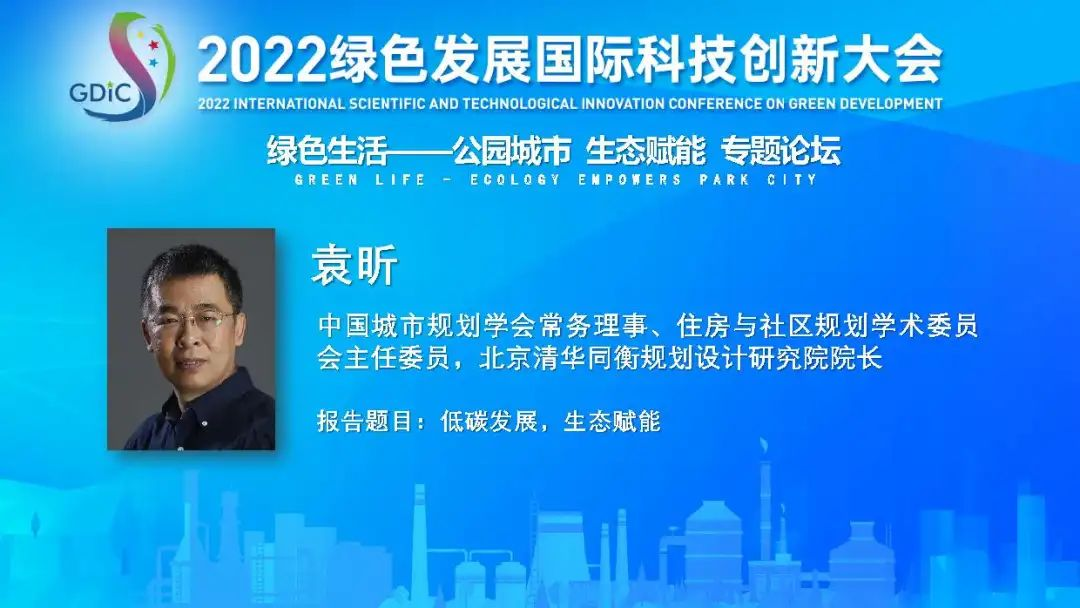
Professor Yuan Xin pointed out that facing the new era of high-quality development, the construction of park cities has put forward a new goal of urban development for us. This goal includes the concept of how to establish natural values and natural assets under the guiding ideology of ecological civilization construction.
Yuan pointed out that through the construction of park cities, natural values can be enhanced, establishing the goal that “clear waters and green mountains are as valuable as mountains of gold and silver.” At the same time, it can empower the high-quality and sustainable development of society and economy, promote systemic changes in society and economy, and achieve the goals of carbon peaking and carbon neutrality as scheduled.

Professor Wang Shusheng introduced three indicators in the field of "cultural promotion" in Park City, namely "cultural heritage, cultural drive, openness and inclusiveness". He emphasized that cultural promotion must be supported by urban cultural space, based on Chinese culture and urban planning traditions, and to build a complete cultural space system.
Wang pointed out that a park city should focus on carrying cultural ideals and moral values, emphasizing the construction of the city's "meaning", and pursuing the city's cultivation of "people's hearts". Paying attention to Chinese historical traditions and creating a new realm of urban cultural construction is the proper meaning of China's urban planning academic system. Urban culture must be carried by cultural space and supported by land use, and the construction of urban cultural space is based on the pursuit of human spirit and meaning. It has both cultural commonality and uniqueness due to local characteristics.
In the end, Shi Nan,the Executive Vice-president of Urban Planning Society of China,concluded that the park city is an important urban development concept proposed by president Xi Jinping. It has rich cultural and philosophical connotations and is a strategic idea proposed in response to the challenges facing Chinese current development. Therefore, the research on the Park City Index emphasizes objective data and scientific calculation, and it is a multidisciplinary research.
Edited and translated by Wang Miao
with reference to <https://mp.weixin.qq.com/s/KxI-V6radLkTbtfsUHBgXg>